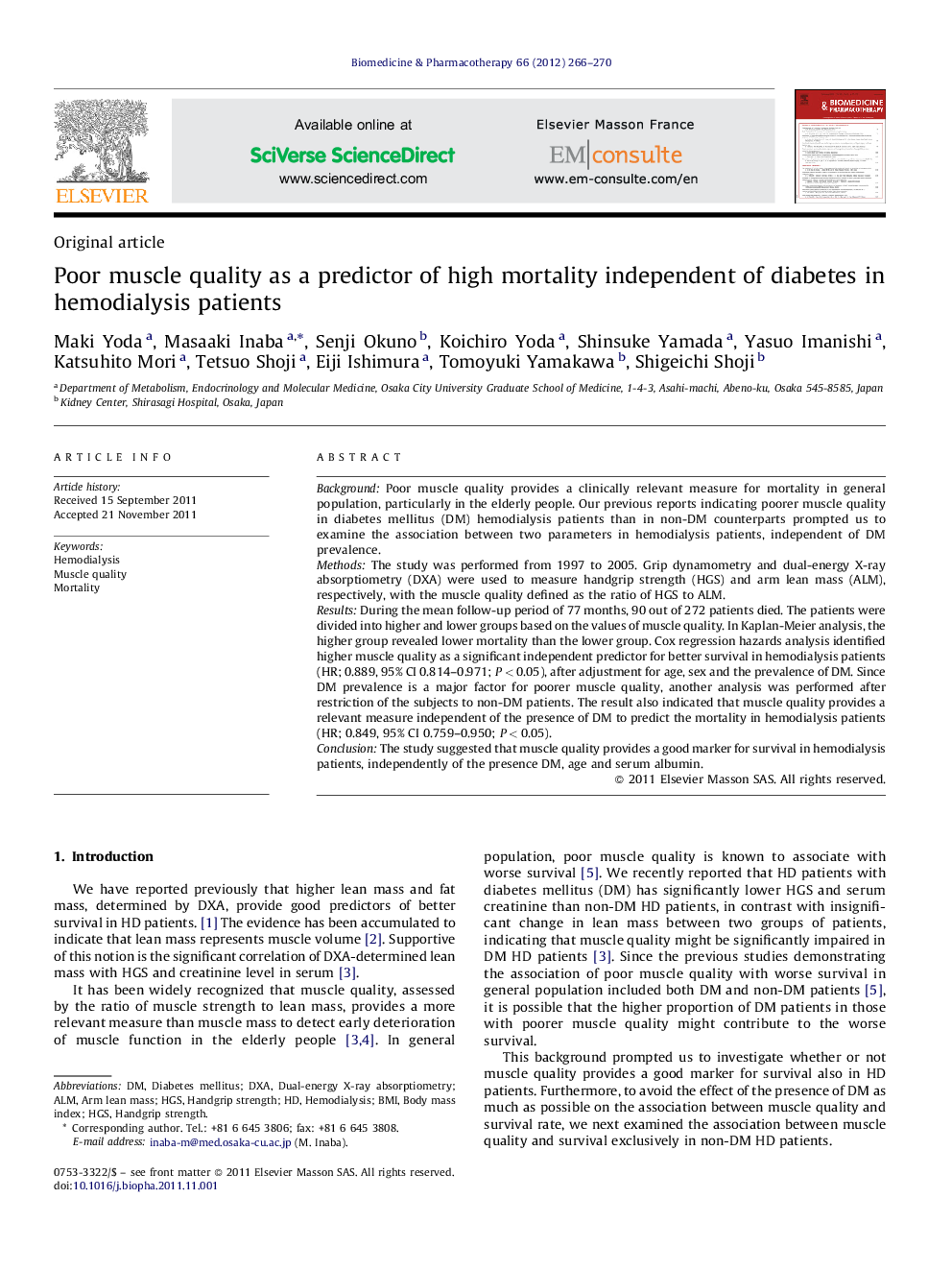| Article ID | Journal | Published Year | Pages | File Type |
|---|---|---|---|---|
| 2524751 | Biomedicine & Pharmacotherapy | 2012 | 5 Pages |
BackgroundPoor muscle quality provides a clinically relevant measure for mortality in general population, particularly in the elderly people. Our previous reports indicating poorer muscle quality in diabetes mellitus (DM) hemodialysis patients than in non-DM counterparts prompted us to examine the association between two parameters in hemodialysis patients, independent of DM prevalence.MethodsThe study was performed from 1997 to 2005. Grip dynamometry and dual-energy X-ray absorptiometry (DXA) were used to measure handgrip strength (HGS) and arm lean mass (ALM), respectively, with the muscle quality defined as the ratio of HGS to ALM.ResultsDuring the mean follow-up period of 77 months, 90 out of 272 patients died. The patients were divided into higher and lower groups based on the values of muscle quality. In Kaplan-Meier analysis, the higher group revealed lower mortality than the lower group. Cox regression hazards analysis identified higher muscle quality as a significant independent predictor for better survival in hemodialysis patients (HR; 0.889, 95% CI 0.814–0.971; P < 0.05), after adjustment for age, sex and the prevalence of DM. Since DM prevalence is a major factor for poorer muscle quality, another analysis was performed after restriction of the subjects to non-DM patients. The result also indicated that muscle quality provides a relevant measure independent of the presence of DM to predict the mortality in hemodialysis patients (HR; 0.849, 95% CI 0.759–0.950; P < 0.05).ConclusionThe study suggested that muscle quality provides a good marker for survival in hemodialysis patients, independently of the presence DM, age and serum albumin.
